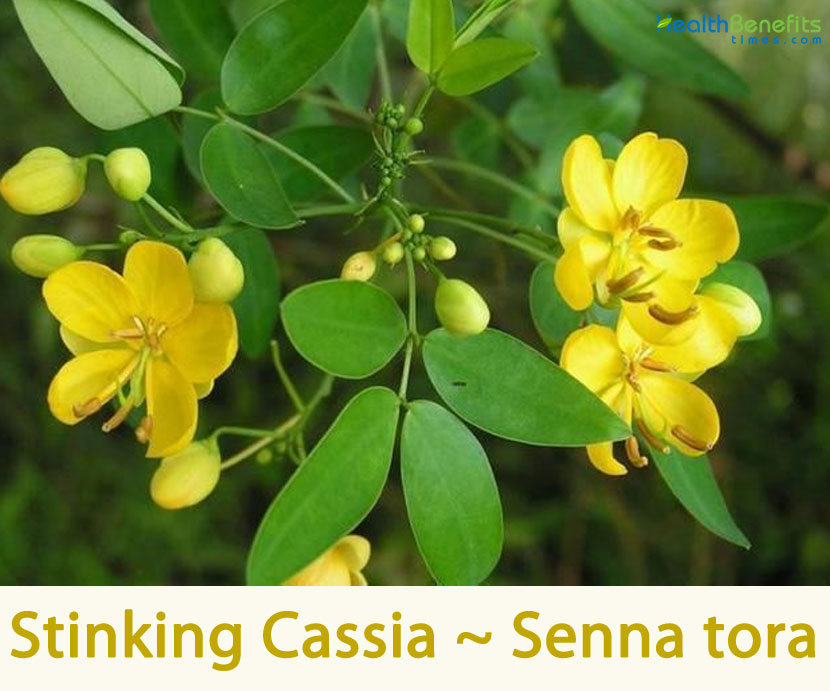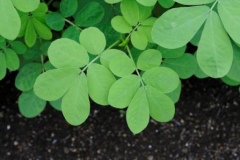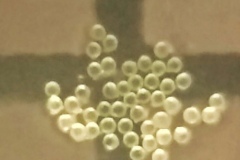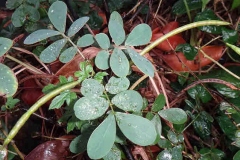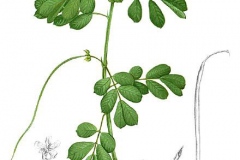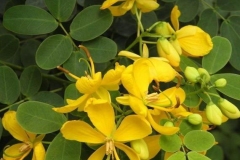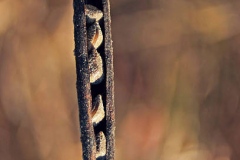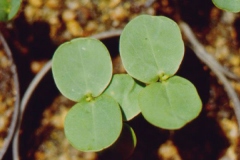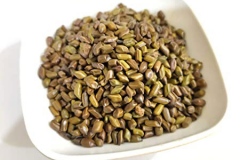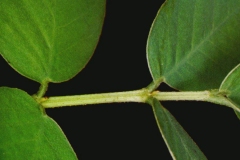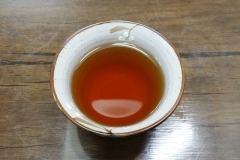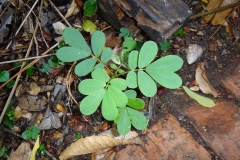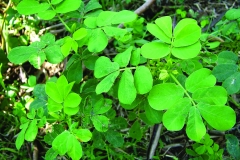| Stinking Cassia Quick Facts | |
|---|---|
| Name: | Stinking Cassia |
| Scientific Name: | Senna tora |
| Origin | Indian sub-continent, southern China, south-eastern Asia and parts of western Polynesia |
| Colors | Initially green turning to brownish-green as they mature |
| Shapes | Slender, sickle-shaped pod that is 12-25 cm long and 2-6 mm wide. It is nearly round in cross-section and curved downwards |
| Health benefits | Beneficial for leprosy, flatulence, colic, dyspepsia, constipation, cough, bronchitis, cardiac disorders, rashes, allergies, headache, conjunctivitis and indigestion |
| Name | Stinking Cassia |
|---|---|
| Scientific Name | Senna tora |
| Native | Indian sub-continent (i.e. India, Bhutan, Nepal, eastern Pakistan, Sri Lanka), southern China, south-eastern Asia (i.e. Cambodia, Laos, Myanmar, Thailand, Vietnam, Indonesia, Malaysia, the Philippines and Papua New Guinea) and parts of western Polynesia (i.e. the Solomon Islands). It is considered invasive in New-Caledonia |
| Common Names | Java bean, foetid cassia, low senna, peanut weed, sickle senna, sicklepod, stinking cassia, chinese senna, sicklepod, sicklepod senns, wild senna |
| Name in Other Languages | Arabic: Kasia thawri (كاسيا ثوري), Tukhme panwar Assamese: Bon medelua, Medeluwa, soru medeluwa, Dari diga, kulb Bengali: Chakunda, Panevar, Bana cākundā (বন চাকুন্দা), Chavuka, Chakunda/ Chakoda beeja Burmese: Tan.kywè: , Tan.kywè:ka.lé:, Mo:kya.lak-hpak Canarese: Gandutogache Chamorro: Amot-tumaga carabao, mumutong palaéan, mumutun admelon, mumutun palaoan Chinese: Jue ming (決明), Xiao jue ming English: Chinese senna, Foetid cassia, Java-bean, Sickle senna, Sicklepod, Sicklepod senna, Stinking cassia, Wild senna, ring worm plant, coffee pod, peanut weed, sickle wild sensitive plant, tora, coffee weed Fijian: Kaumoce, kaumothe, pini Finnish: Sirppisenna French: Cassier sauvage, Pois puant, Séné, Casse Puante Petit Espece, Casse Puante, Petite Espece, fausse pistache, herbe pistache German: Gemüsekassie Gujarati: Kawaria, Kovaraya Hindi: Chakavat, Chakod, Chakunda (चकूंदा), Chakvad, Chakwand (चकवंड), Charota, Edgaj (एड़गज ), Padmat (पद्माट), Panwar (पंवार), Prapunat (प्रपुनाट), Tarkil (तर्किल), Chakwar, Panevar, pawad, Pawar, tarota Irula: Ooci thagarai Italian: Cassia selvatica Japanese: Yí cǎo (夷 草) Ebisu gusa, Ebisu gusa (エビスグサ) Kannada: Cagate (ಚಗತೆ), Chagate (ಚಗಟೆ), Chagache (ಚಗಚೆ), Chagacche (ಚಗಚ್ಚೆ), Chakramarda (ಚಕ್ರಮರ್ದ), Chakramardaka (ಚಕ್ರಮರ್ದಕ), Karavasa (ಕರವಸ), Tarutigi (ತರುಟಿಗಿ), Tarutege (ತರುಟೆಗೆ), Holasangi (ಹೊಲಸಂಗಿ), Gandutogache, Tagache (ತಗಚೆ), Thagathe Soppu Korean: Cho gyeol myeong (초결 명), Gin gang nam cha (긴강남차), gyeol myeong ja (결명차) Laotian: Lap mun, Nha lap meun Malay: Gelenggang kechil Malayalam: Chakramandrakam, Takara, vaṭṭattakara (വട്ടത്തകര), Ponthakara, Sakramardakam, tagaa, thakara Manipuri: Thaunum namthibi (থৌনম নমথীবী) Marathi: Takala (टाकळा), Ṭāṅkaḷā (टांकळा), Taravaḍa (तरवड) Mizo: Kelbe Nepali: Cakamake, Cakramandi, Carkor, Taper, Tapre, Sānō tāprē (सानो ताप्रे) Oriya: Chakunda Persian: Sangsaboyah Polish: Stracze egipskie, Straczyniec Portuguese: Fedegoso branco, matapasto-liso Punjabi: Pavāra (ਪਵਾਰ) Pawár, Panwal, Chakunda, Chakwad Rotuman: Pin Russian: Kassiya Tora (кассия тора), Senna Tora, senna aleksandriysksya (сенна александрийскся) Samoan: Vao pīnati, vao pinati, vao sei Sanskrit: Chakramarda, Chakramardakah (चक्रमर्दकः), Chakramgajah (चक्रम्गजः), Dadmari, Dadrughnah (दद्रुघ्नः), Dadrughra, Edgajah (एडगजः), Padmatah (पद्मटः), Prapunat (प्रपुनाट), Taga, Tarkil (तर्किल) Sinhalese: Peti-Tora, Tora (තෝර) Sakaya (ශාකය) Spanish: Bicho, Brusca cimarrona, Ororuz, bicho macho, chilinchil, comida de murcielago, mamuri, cana fistula, guanine, matapasto, frijolilla Tamil: Takarai (தகரை) Thagarai, Vaddutatakarai, Cēnāvu (சேநாவு) Senavu, Vshittgarai Telugu: Chinnakasinda, Tagara (తగర), Tagaricettu (తగిరిసచెట్టు), Tantemu (తంటెము), Tagiris Thai: Chumhet thai (ชุมเห็ดไทย) Tibetan: Thal-ka-rdo-rdze Tongan: Pipi p pālangi, te‘ekosi, te‘epulu, tega fefeka, tengafefeka Urdu: Ergaj, Panwar, Panevar, Tarota Vietnamese: Cây Muồng ngủ, Muồng lạc, Muồng ngủ, Muồng đồng tiền, Muồng hòe, Thảo quyết minh |
| Plant Growth Habit | Small erect hairless, annual to perennial plant |
| Growing Climates | Occurs abundantly in open pastures, in pastures under coconuts, mountain slopes, roadsides, wasteland, river bank sands, disturbed sites, waterways, pastures in wetter tropical and sub-tropical environments |
| Soil | Prefers a deep, well-drained, moderately fertile sandy loam and tolerates fairly low soil fertilities and moisture levels |
| Plant Size | Up to 50-150 cm tall, but sometimes growing up to 2.5 m in height |
| Stem | Stem smooth, glabrous, green, sparsely hairy. 0.2-0.5 cm width |
| Leaf | Compound leaves of the plant are arranged alternately along the stems and are borne on fairly long petioles which are about 20-45 mm long |
| Flowering season | June – August |
| Flower | Yellow flowers are borne on 6-10 mm long stalks. These flowers are arranged in pairs in the leaf forks and are mostly found near the tips of the branches |
| Fruit Shape & Size | Slender, sickle-shaped pod that is 12-25 cm long and 2-6 mm wide. It is nearly round in cross-section and curved downwards |
| Fruit Color | Initially green turning to brownish-green as they mature |
| Seed | Seeds are striped olive and brown about 3 mm long, shiny in appearance, and flattened or irregularly shaped |
| Propagation | By seed |
| Flavor/Aroma | Strong, unpleasant smell |
| Plant Parts Used | Leaves, seeds, roots |
| Season | August – October |
| Precautions |
|
Plant Description
Stinking Cassia is a small erect hairless, annual to perennial plant that normally grows about 50-150 cm tall, but sometimes growing up to 2.5 m in height. The plant occurs abundantly in open pastures, in pastures under coconuts, mountain slopes, roadsides, wasteland, river bank sands, disturbed sites, waterways and also pastures in wetter tropical and sub-tropical environments. The plant prefers deep, well-drained, moderately fertile sandy loam and tolerates fairly low soil fertilities and moisture levels. True to its name, foetid/stinking cassia has an unpleasant smell. It is broadly spreading with several ascending, hairless branches. The branched, sprawling, stems are usually hairless or sparsely hairy.
Leaves
Compound leaves of the plant are arranged alternately along the stems and are borne on fairly long petioles which are about 20-45 mm long. 50-75 mm long leaves have about two to four pairs of leaflets that are egg-shaped in outline with narrower end attached to the stalk. Leaflets are 10-55 mm long and 10-35 mm wide and have rounded tips and their margins are lined with tiny hairs. Small elongated structure is usually located between each of the lowest two pairs of leaflets. Leaves give off a strong unpleasant odor, mostly when damaged or brushed against.
Flowers
The yellow flowers are borne on 6-10 mm long stalks. These flowers are arranged in pairs in the leaf forks and are mostly found near the tips of the branches. Each flower consists of five sepals, five yellow petals (8-10 mm long) and seven fertile stamens with small anthers (1.5-2.5 mm long). Flowering occurs mostly from late summer through to early winter.
Fruit & Seeds
Fertile flowers are followed by a very slender, sickle-shaped pod that is 12-25 cm long and 2-6 mm wide. It is nearly round in cross-section and curved downwards. Fruits are initially green turning to brownish-green as they mature and are slightly concave between each of the seeds (i.e. the pods are slightly separate). There are 30–50 seeds within a pod. Seeds are striped olive and brown about 3 mm long, shiny in appearance, and flattened or irregularly shaped.
Stinking Cassia has several uses. The plant and seeds are edible. Young leaves can be cooked as a vegetable while the roasted seeds are used as a substitute coffee. Flowers are added to food in Sri Lanka. It is mixed with guar gum for use in mining and other industrial applications. The seeds and leaves are used to treat skin disease and its seeds can be utilized as a laxative. Cassia tora is made into tea. In the Republic of Korea, it is believed to rejuvenate human vision.
Traditional uses and benefits of Stinking Cassia
- Leaves and the seeds are antispasmodic, ophthalmic, carminative, anti-cholesterolemic, hepatic, purgative and emollient.
- Powdered leaves are used in the treatment of stomach pain and indigestion.
- Externally leaves are used in the treatment of skin diseases.
- In Korea, seed is used to treat glaucoma, edema, nyctalopia, constipation and to protect the liver.
- Externally paste made from the seed is used to treat leprosy, leucoderma and itchy skin in Nepal.
- Lemon juice along with a paste made from the roots is applied as a poultice to cure ringworm.
- Decoction of the fruit is used in the treatment of fevers.
- They are used to rid the body of parasites and as a treatment against vomiting and stomach-ache.
- Externally, they are used to treat ulcers, skin infections, sores and insect bites.
- Decoction prepared from the leaves is used to treat eye complaints.
- Seeds are eaten or combined with a leaf decoction to treat conjunctivitis.
- They are also used to treat, diseases of eyes, herpes and to heal infected sores.
- They are used to lower blood pressure.
- Seeds intake gives relief in constipation.
- Intake of roasted seeds helps in headache.
- Externally, the seeds are mashed in vinegar or alcohol and applied on eczema. OR the seed paste with turmeric and mustard oil is applied topically.
- Gum obtained from seeds is used as emulsifying and binding agent.
- Its powder is beneficial in combating indigestion, toning up heart muscles and purifying blood.
- Juice extracted from its leaves is used in case of skin ailments, rashes and allergies.
- It is also used as an antidote in case of various poisonings.
- Leaves and seeds are useful in leprosy, flatulence, colic, dyspepsia, constipation, cough, bronchitis and cardiac disorders.
- Decoction of the fruit is used in the treatment of fever.
- It is consumed in worm infestation and cures the infection occurring in the body.
Ayurvedic health benefits of Stinking Cassia
- Eczema: Leaf paste is applied. OR Root paste with lime juice is applied.
- Blood dysentery, diarrhea: Leaf juice mixed with salt is given.
- Scabies/itches: Plant paste with buttermilk is applied. OR Leaf decoction is used as a wash.
- Carbuncles, warts: Root paste with lime juice is applied. OR Hot leaf paste is applied.
- Bee sting: Pounded leaf is applied topically.
- Ring worm, scabies: Seed paste with buttermilk is applied.
- Fever: Leaf decoction is given.
- Pus release from furuncles: Hot leaf paste is applied.
- Menstrual disorders: Whole plant decoction is given.
- Psoriasis: Leaf juice is applied topically.
- Blisters: Juice of the leaves of Stinking Cassia is applied.
- Eczema: Paste made of Stinking Cassia with milk or the paste of the roots is applied.
- Blood purifier: The very fine powder of the root is given in doses of 3-4 grams every morning mixed with 30 ml of ghee and 7 ml powdered sugar.
- Scrofula: Medicated mustard oil is prepared by boiling macerated roots of Stinking Cassia and juice of Eclipta Alba. This is made into an ointment with the addition of a little red lead. This ointment is applied topically on scrofula.
- Leprosy: Stinking Cassia seeds are soaked in the milky juice of Euphorbia neriifolia for some time. These seeds are ground into a paste with cow’s urine. The paste is applied over the affected parts. OR Ointment made of Rasunt and the seeds of Stinking Cassia and juice of wood apple is applied topically.
- Sexual debility: Stinking Cassia roots 3-5 grams mixed with ghee and sugar is given daily early in the morning.
- Leucoderma: Paste made of equal parts of Stinking Cassia + sandalwood + camphor with buttermilk is applied topically. OR Paste made of equal parts of the seeds of Stinking Cassia and neem berries is applied topically.
Culinary Uses
- Young leaves can be cooked as a vegetable.
- Roasted seeds are a coffee substitute.
- Seeds are cooked or roasted in the pods.
- They are eaten as a side-dish with rice.
- Young, tender leaves and shoots are cooked.
- They are steamed as a potherb, or cooked and eaten with rice.
- Powdered and fermented leaves are used as a condiment.
- Leaves are used to make a tea-like infusion.
- Seeds are occasionally dried and ground into a powder, which is cooked and eaten as a staple food in moderate amounts.
- Seeds consist of commercially interesting levels of gums.
- In India they are collected from wild plants for the industrial extraction of gums for the food industry.
Other Facts
- Seeds are a source of tannin.
- Seeds are used as a mordant when dyeing cloth blue.
- Seeds, the macerated leaves and the roots provide black, blue, yellow and orange dyes.
- Stems are used to make mats and fences.
- Yellow flowers and seeds are good source of blue dye.
- Boiled seeds are given to the animals to treat hypogalactia.
References:
https://www.itis.gov/servlet/SingleRpt/SingleRpt?search_topic=TSN&search_value=505182#null
http://www.hear.org/pier/species/senna_tora.htm
https://pfaf.org/user/Plant.aspx?LatinName=Senna+tora
http://tropical.theferns.info/viewtropical.php?id=Senna+tora
https://plants.usda.gov/home/plantProfile?symbol=SETO4
http://www.theplantlist.org/tpl1.1/record/ild-1143
https://indiabiodiversity.org/species/show/231121
https://www.flowersofindia.net/catalog/slides/Stinking%20Cassia.html
https://en.wikipedia.org/wiki/Senna_tora
https://keyserver.lucidcentral.org/weeds/data/media/Html/senna_tora.htm
https://gd.eppo.int/taxon/CASTO


